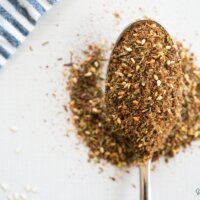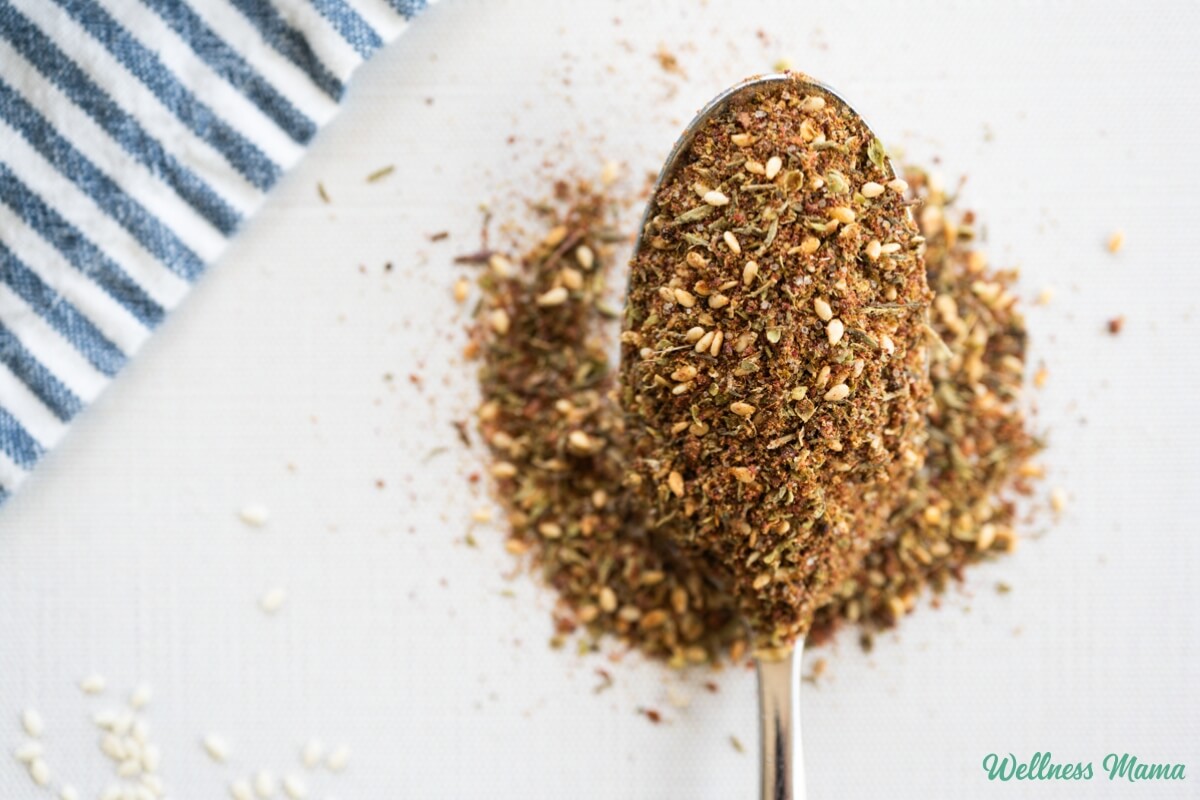Za’atar spice mix isn’t something you’d find in the average US pantry, but this spice mixture is worth keeping around! Its unique herby, lemony flavor is the perfect condiment for veggies, meat, and more. I started using it on Lebanese-inspired homemade labneh and I’ve been hooked ever since.
What is Za’atar Seasoning Blend?
Let me introduce you… This popular Middle Eastern spice blend features nutty sesame seeds, tart ground sumac, and other fragrant herbs. Exactly which ones depends on the region you’re in. You can find plenty of different recipes, but the ingredients are largely the same. This spice blend can sometimes include marjoram, coriander, wild thyme, or other dried herbs.
Za’atar isn’t just a seasoning blend. Za’atar leaves are another name for the hyssop plant and these were traditionally included in za’atar seasoning. Then it’s finished off with some sea salt to tie the flavors together.
Ways to Use Your Za’atar Spice Blend
I like to keep this on hand to use for all sorts of veggies, dips, and meats. It adds such a unique flavor and I love that it’s packed with antioxidants and vitamins. Unlike some blends (like Italian seasoning), za’atar is more of a finishing seasoning.
- Meat: You can use it on meats, like fish, beef, and lamb, as a rub before grilling. Or add a few tablespoons to some olive oil and lemon juice for a chicken marinade.
- Grilled Vegetables: Veggies also taste great with some za’atar seasoning. Toss your veggies in olive oil and za’atar for a flavorful twist.
- Labneh: I mentioned earlier that I like sprinkling some za’atar on labneh. This strained yogurt is a soft cheese that makes a delicious dip, especially with the lemony za’atar spice on it.
- Baba ganoush: Another traditional Middle Eastern dip, baba ganoush is made from roasted eggplant. It’s also a great veggie dip and I like it with cucumber slices.
- Hummus: Made with chickpeas, olive oil, and tahini (among other things) hummus is a staple in our home. Many people eat it with flatbread or pita bread but we prefer it with veggies at our house.
- Eggs: We eat a lot of eggs for breakfast so I like to change up the seasonings. This spice works great sprinkled over scrambled or poached eggs.
The cumin, thyme, and sumac in this recipe are all ground. If all you can find are whole sumac berries then you can use a coffee grinder or mortar and pestle to crush the berries. They grow wild in some parts of the US if you want to forage them yourself. Some grocery stores even carry sumac now.
Don’t want to make it? You can get organic premade za’atar here.

Homemade Za’atar Spice Blend
Servings
Equipment
Ingredients
- 1 TBSP sesame seeds
- 1 TBSP ground cumin
- 1 TBSP thyme
- 1 TBSP dried oregano
- 1 TBSP Sumac powder
- 1 tsp salt
Instructions
- In a dry skillet over medium heat toast the sesame seeds until they're golden brown and fragrant, stirring occasionally.
- Remove seeds from heat and let them cool.
- In a bowl mix together the toasted sesame seeds, cumin powder, thyme, oregano, sumac, and salt.
- Store in an airtight container in a cool, dark place.
Nutrition
Notes
Recipes to Use With Za’atar Spice Blend
Here are some recipes to try with your new spice blend!
- Roasted Red Pepper Hummus
- Sundried Tomato and Roasted Garlic Hummus
- Labneh
- Grilled vegetables
- Ham and Egg Breakfast Cups
- Creamy Shirred Eggs
Have you ever tried za’atar seasoning before? What will you try it on first? Leave a comment and let me know!




Leave a Reply